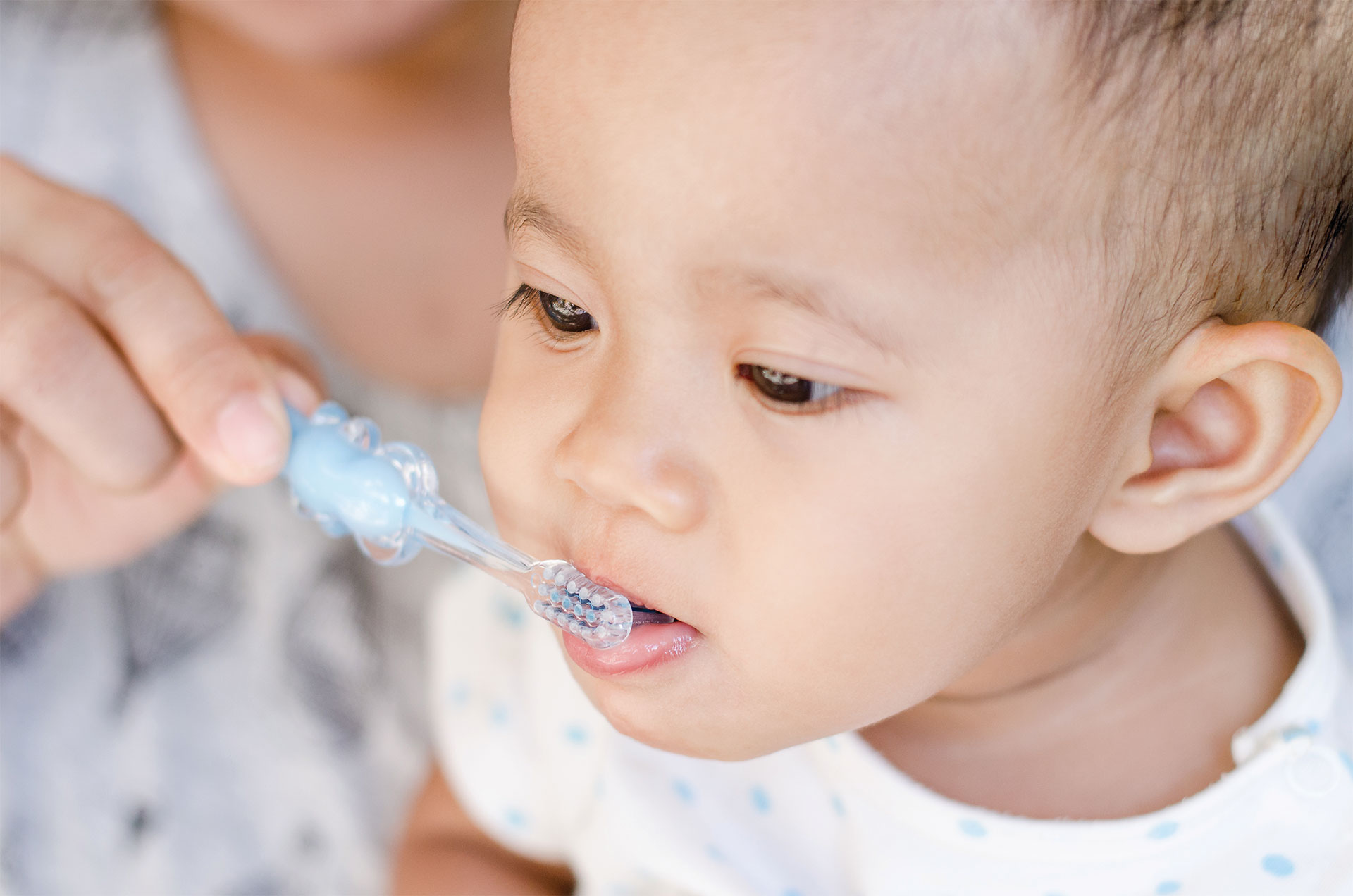Keeping your child’s teeth healthy from an early age helps prevent cavities and sets the stage for lifelong good habits. Here are answers to common questions about caring for your child’s teeth and gums.





Plaque bacteria use sugars and starches from food and drinks to make acid.

Acid weaken tooth enamel and causes cavities.
You can help protect your child’s teeth by following these steps:



The American Academy of Pediatrics recommends fluoride varnish every 3-6 months. Fluoride varnish is like a vitamin boost for your kid’s teeth. It’s a safe, sticky gel that a doctor or dentist paints on.
Here’s what it does:

Schedule your child’s first dental visit by their first birthday.
The visit should be friendly and educational so your child feels comfortable. After that, take your child to the dentist every six months to keep their teeth healthy.
Once your child can hold a toothbrush, start teaching them how to brush.
Keep helping until they can spit out the toothpaste on their own, usually around age 7 or 8 years.
Replace your child’s toothbrush every 3 months or sooner if the bristles are worn out.
It’s also a good idea to get a new toothbrush after your child has been sick.
No, because bacteria can spread from one toothbrush to another.
When toothbrushes touch, bacteria from one person’s mouth can transfer to another’s. If someone in the household is sick, it can increase the risk of spreading infections.
Toothbrushes stored together in a cup also often remain damp, creating an ideal environment for bacteria and mold to grow. It’s best to store toothbrushes upright in individual holders, allowing them to air dry. If using a shared holder, make sure toothbrushes are spaced apart and not touching.
Can Certain Foods and Drinks Cause More Cavities?
Yes! Here are some tips to keep your child’s teeth healthy:
Don’t offer sugary drinks before 2 years of age, including soda, fruit drinks, lemonade, and sports drinks.
What Foods Help Keep Teeth Healthy?
A balanced diet with protein, fruits, vegetables, whole grains, and dairy helps build strong teeth.

Healthy Teeth, Happy Smiles!
Taking care of your child’s teeth early on helps them develop strong, healthy smiles for life. By following these simple steps, you’re setting them up for good dental habits. If you have any concerns about your child’s teeth, talk to your dentist or pediatrician.
Tooth decay. (2023, August 28). MedlinePlus.
https://medlineplus.gov/toothdecay.html
American Academy of Pediatric Dentistry. (2024). Policy on use of fluoride. In The Reference Manual of Pediatric Dentistry (pp. 101-103).
https://www.aapd.org/globalassets/media/policies_guidelines/p_fluorideuse.pdf
American Academy of Pediatric Dentistry. (2024). Policy on early childhood caries (ECC): Consequences and preventive strategies. In The Reference Manual of Pediatric Dentistry (pp. 89-92).
https://www.aapd.org/globalassets/media/policies_guidelines/p_eccconsequences.pdf
Age group resources: Tips for parents. (n.d.). My Children’s Teeth. Retrieved March 21, 2025, from
https://www.mychildrensteeth.org/age-group-resources/tips-for-parents/
Shu, J. (2023, July 3). From bottle to cup, Helping Your Child Make a Healthy Transition. HealthyChildren.org.
https://www.healthychildren.org/English/ages-stages/baby/feeding-nutrition/Pages/Discontinuing-the-Bottle.aspx
Choose water for healthy hydration. (n.d.). HealthyChildren.org. Retrieved March 21, 2025, from
https://www.healthychildren.org/English/healthy-living/nutrition/Pages/Choose-Water-for-Healthy-Hydration.aspx
Dietary guidelines for babies and toddlers: A fact sheet. (n.d.). DietaryGuidelines.gov.
https://www.dietaryguidelines.gov/sites/default/files/2021-12/DGA_Babies_FactSheet-508c_0.pdf
American Academy of Pediatric Dentistry. (n.d.). Healthy smiles guidebook.
https://www.aapd.org/assets/1/7/HealthySmilesGuidebook.pdf
Seymore, B. (n.d.). A mom’s guide to fluoride. MouthHealthy.org.
https://www.mouthhealthy.org/life-stages/babies-and-kids/moms-guide-to-fluoride
Resources. (n.d.). MouthHealthy.org. Retrieved March 21, 2025, from
https://www.mouthhealthy.org/resources
Author: Bridget Swinney MS, RDN, LD
Install this web app on your iPhone: tap ![]() and then Add to Home Screen.
and then Add to Home Screen.
Side-Lying Hold
This hold is useful when:
Cross-Cradle Hold
This hold is useful when:
Clutch or “Football” Hold
This hold is useful when:
Cradle Hold
This hold is useful when:
Laid-Back Hold
This hold is useful when: